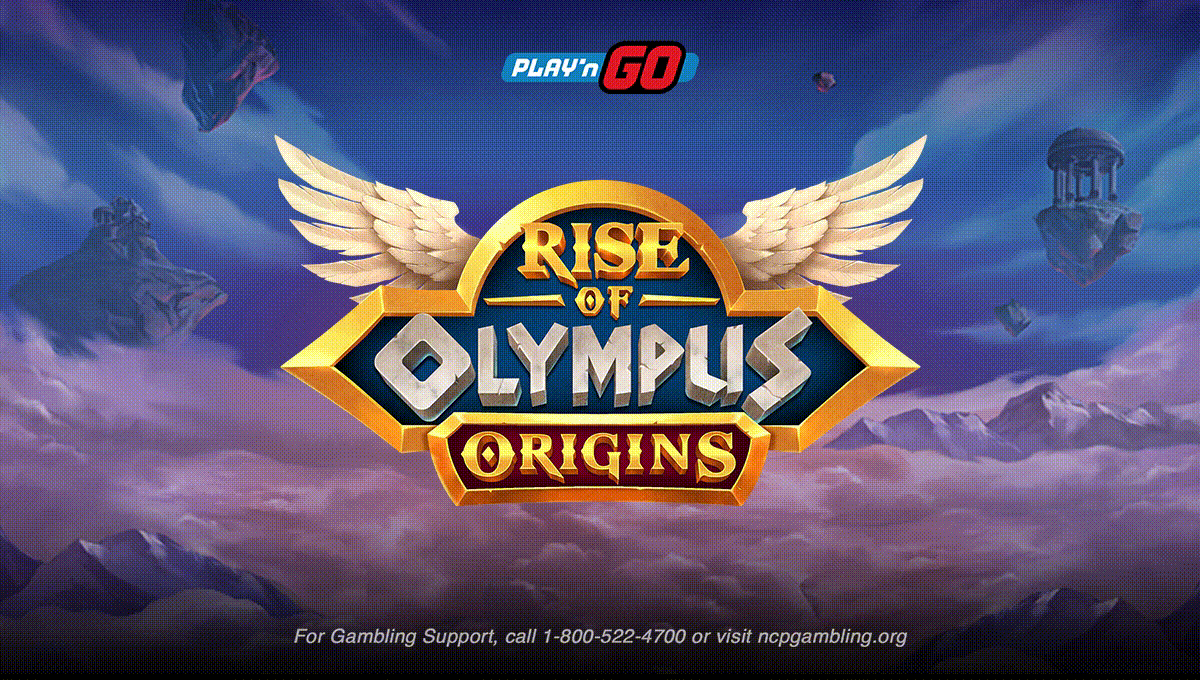Interviews
America’s got talent
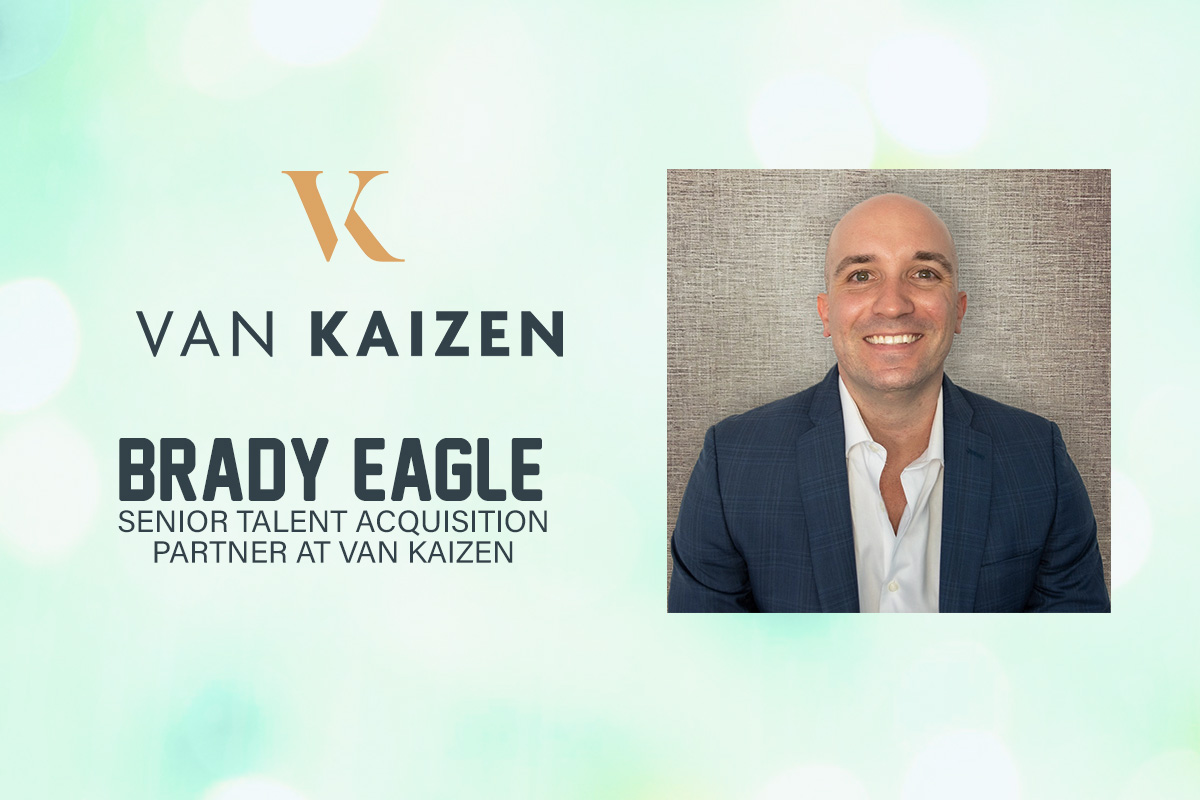
Operators and suppliers must attract the best talent in the business if they are to achieve their ambitious goals in what is a highly competitive market. We sat down with Brady Eagle from Van Kaizen to learn more.
Talent acquisition is one of the greatest challenges for organizations in North America to overcome, with the demand for experience and skill on both the operator and supplier sides high. But with the first half of the year marked by micro and macro-economic challenges, set against the maturing of the online gambling sector in the US and Canada, the pace and scale at which organizations recruit have slowed significantly.
With some of those challenges now behind us, it looks set to be business as usual for operators and suppliers when it comes to identifying and onboarding talent for the rest of the year. To learn more about current recruitment trends, including where the supply/demand balance currently sits, we spoke with Brady Eagle, Senior Talent Acquisition Partner at Van Kaizen.
How has the recruitment space in North America played out so far this year?
Recruitment in 2023 has been quite different to years past. Where there were hiring bursts from the end of 2020 to the end of 2022, the first half of 2023 saw a perfect storm of micro and macro-economic factors that hit all around the world, including North America, that slowed down the pace of talent acquisition.
These factors included the USA hitting five years post-PASPA with share/stakeholders telling companies to stop spending money and demanding they become profitable, and even layoffs hitting the iGaming sector which we hadn’t really seen before.
Off the back of a challenging six months, the second half of the year was always going to be the timetable for companies to pick back up hiring. Come the end of July the speed at which companies were looking to onboard new talent accelerated ahead of the busy fall sports seasons, along with the continued anticipation of iGaming state expansion.
So, we have seen a steadying out of hiring across operators, suppliers, and the wider iGaming ecosystem (including newer niches in North America like media and affiliates), with the main hires coming across product, digital marketing and commercial roles including sales, account management, customer success, etc.
What have been the main challenges faced and what impact has this had on talent acquisition?
The biggest challenge in 2023 was the economy’s ups and downs and the ripple effect this had on the industry. It was important to educate those in the iGaming space that the layoffs that were happening in the North American economy were mostly across the digital and B2C sectors and especially at the ecommerce power players (Meta/Facebook, Apple, Amazon, Netflix, Google) that had expanded exponentially during and post-Covid.
It was a reminder to clients that the iGaming sector isn’t affected as much by economic volatility as other industries are, and that it can even see a slight uptick during an economic downturn. So, for roles in competitive spaces like product and digital marketing, companies need to continue with those hires before the next upturn when they will find themselves back in competition with organizations from both the iGaming and other sectors. This was a tough message to get across at times.
What are the biggest hurdles organizations are up against when it comes to attracting the best talent? How can these hurdles be cleared? What does talent expect from an organization?
One of the biggest hurdles is the competitiveness within North America’s iGaming and sports betting space. With the industry being regulated for five years in the States, and even more recently in Canada in Ontario, it’s become mainstream to the point where even the most novice of bettors and/or those interested in casino want to work within the industry. iGaming is seen to provide the stability that some industries currently lack, with the ability to grow versus more mature industries that have become stagnant.
These hurdles of identifying and hiring talent can be cleared by having a very streamlined interview process, from candidate introduction and interviews, to offer, to the onboarding stage, to the candidate starting with the company. So many times, we see the interview process get off to a great start only for the final interview and offer to happen after one or two weeks of waiting during which time the candidate has potentially moved on to another opportunity. In such a competitive market, companies just can’t hand this sort of advantage to their rivals.
Where is the balance between supply and demand currently sitting? Which roles are in the highest demand?
In the iGaming and sports betting space, you’ll always see product managers, digital marketing (especially acquisition and CRM) and commercial roles (sales, business development, customer success) as being those that companies are looking to identify top talent for.
When it comes to the supply and demand of candidates, companies very much have a need for iGaming/sports betting talent, especially for Lead, Manager, Director and above levels. They need these candidates to have started/built/conceptualized and led a product roadmap end-to-end, or for them to understand campaign management on the marketing side or have a good “rolodex” or client base to be able to “hit the ground running” on the commercial side. So, the supply-and-demand, while getting bigger as a whole, is still pretty finite for senior-level roles.
Do North American businesses prefer to hire from within the US/Canada? Or is there a preference for experienced talent from Europe? What is driving this?
Unfortunately, most companies in the US are tied to immigration laws where they are only able to use US citizens or those with a Green Card (permanent residency). Even more so now, we are starting to see companies (like those in other industries in the US) wanting candidates to be located within the metro where they are headquartered or have a hub so that they can be a weekly hybrid company. With that, we are seeing an advantage handed to those companies that are still offering fully remote working.
On the Canadian side, there’s a little more flexibility, but most companies want to have the candidate based in Ontario and ideally within Toronto. But, if they are in a major metro area like Vancouver, Calgary or Montreal, there’s scope for remote and hybrid working.
How’s the recruitment space shaping up for the final quarter of the year?
Most companies have weathered the storm of the first half of the year, and things are starting to pick back up. With conference season in full swing with SBC Barcelona having just taken place and G2E in Vegas and SBC Latin America in Miami on the docket for the end of this year, you’ll see companies celebrating their successes by hiring across sales and business development, marketing, and product.
The continued (and more recent) push is for those with iGaming and especially iCasino experience as there is hope for more states to launch iGaming next year – Rhode Island is ready and raring to go – and the need for them to start to prepare for that given how much of a revenue driver it is for organizations.
Any final thoughts you’d like to share about recruitment in North America?
I think that recruiting will be back to somewhat steady and normal levels in 2024. With the steadying of inflation (as of September, at least!) and potential new jurisdictions coming down the line or launching, it should be another exciting year for both operators and suppliers to continue to carve their way to more market share on the B2C side, or to be able to get in and bring their product to operators on the B2B side. At Van Kaizen, we look forward to supporting clients on the hiring side, along with finding that new adventure for candidates.
Interviews
Lottery launch – Exclusive Q&A w/ Frank Cecchini, Head of Lottery at Evoplay
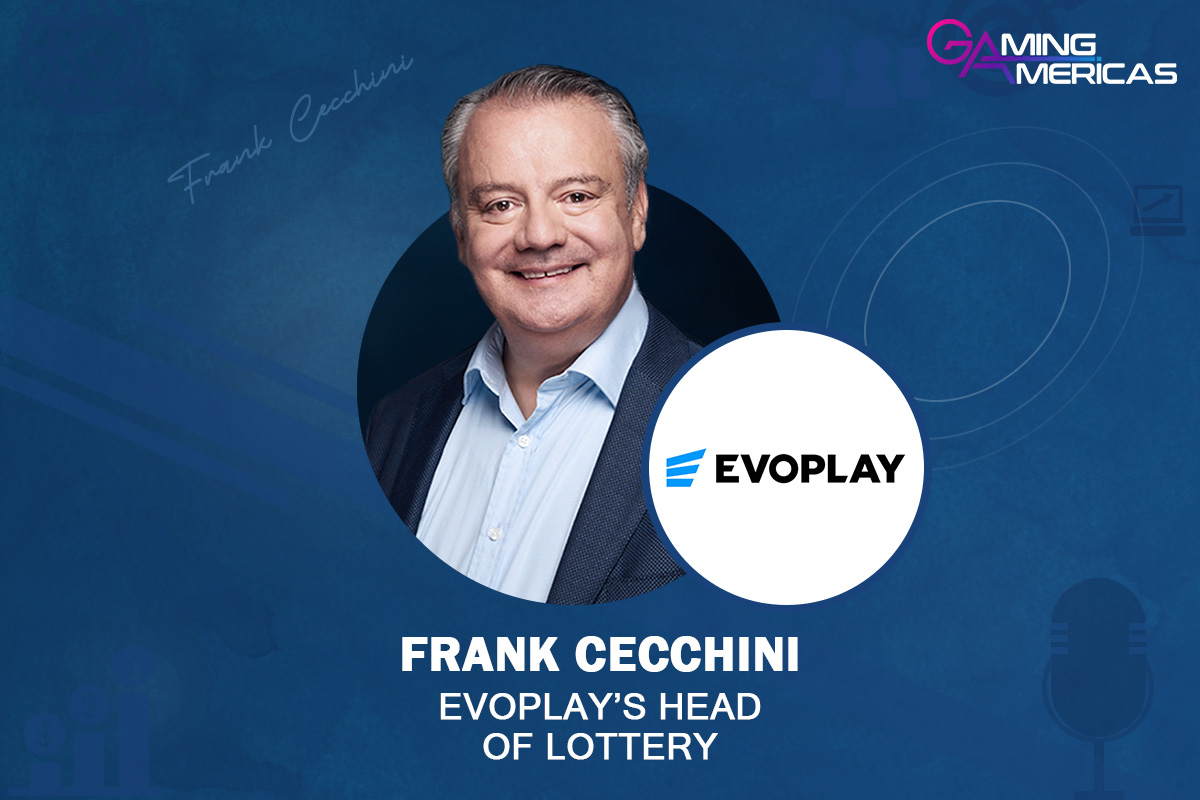
Evoplay recently announced the launch of its lottery products in partnership with EQL Games. What has the initial market response been like, and how do you see the products evolving?
We view the partnership with EQL Games as an exciting development, as it represents our first steps in the US lottery market. While it’s still too early to assess the market response, EQL is one of the largest independent providers of games in the US lottery market. Integrating our products into their US portfolio provides lotteries with access to super competitive content and lays the foundation for future growth, opening the door to broader opportunities.
Evoplay is famous as an award-winning iGaming studio that produces innovative games that many operators across the globe take up. However, as newcomers to the very different lottery market, we are taking a strategic, step-by-step approach to building visibility and establishing a strong presence. Not all of our games are appropriate for the far more conservative iLottery market – we are, therefore, modifying our most popular instant win games as well as developing specific ‘lottery friendly’ content to establish a lottery focussed portfolio of games that support safer gaming initiatives while still being attractive to players.
In October, Evoplay will be attending the World Lottery Summit in Paris, where we will showcase our lottery games and ideas. This engagement is vital to our strategy to expand our network and explore new partnerships.
How would you evaluate the current landscape of the US lottery market? Are there any new partnerships on the horizon for the US market?
There are two factors currently impacting the US lottery market. First, retail sales are down, with most lotteries reporting significant declines in draw-based game sales for this fiscal year (FY25), mainly due to the lack of massive jackpots seen in FY24. Second, there’s increased competition for gambling dollars as states legalise online sports betting, bringing faster casino-style games to mobile devices. The attractive sign-up bonuses from online operators are drawing younger players away from traditional lottery games.
While North America’s iLottery sales are expected to reach $17.7 billion by 2032, this won’t fully offset the decline in draw-based games. To compete, lotteries must offer similar opportunities while leveraging their trusted branding. Evoplay can help by providing games that are not only safe but also appealing. This approach is already attracting interest from potential partners, and we expect that number to grow.
When introducing a long-established product like lottery, how do you ensure it resonates with new players while maintaining engagement from your core audience?
To engage new players as well as our existing audience, we’ve begun by transforming our popular instant games, such as Penalty Shoot-out, along with flagship titles like Adrenaline Rush and Star Guardians, into captivating lottery experiences. Unlike traditional lotteries, our games will offer a unique blend of excitement and entertainment, appealing to players who enjoy both casino dynamics and large jackpotswhile retaining familiar elements that resonate with our loyal audience.
By turning our popular titles into innovative lottery games and introducing entirely new ones, we aim toimpact in both the iGaming and lottery markets. We’re confident that our audience and newcomers alike will be curious about these new games, and we’ll further boost interest through various promotions. Evoplay’s products will deliver a unique gaming experience, combining nostalgic charm with modern appeal, ensuring they resonate with different player types worldwide. When players discover they’re not only having a great time but also having a chance to hit the jackpot and make their dreams come true, they won’t be indifferent.
In which global markets is the lottery experiencing the most growth, and where do you see the biggest opportunities?
Right now, the American (both North and South) market is at the forefront of online lottery growth, and there are huge opportunities here. The COVID-19 pandemic has pushed many players from retail to online platforms, leading to a clear increase in lottery participation globally. In the US, new online and sports betting laws have further accelerated this growth.
Asia is also a significant growth market, as is Latin America, which is becoming more accessible for operators. But if you ask me to pinpoint the biggest area for opportunity, I’d definitely say it’s the US. I believe our partnership with EQL Games is the first step for Evoplay to enter this market and sets the stage for future growth and success.
We are also focused on expanding our presence in other key markets, including Europe and beyond, where there are many lottery fans. The open data for 2024 highlights the growing potential in these regions, particularly in the top five countries by revenue, whichthe United States, the United Kingdom, Germany, France, and Canada lead. . This landscape presents us with numerous opportunities to leverage.
What does the future of the lottery look like to you?
As the lottery evolves, it will increasingly have to take on some of the characteristics of an online casino. To stay relevant, lotteries must enhance their game offerings and refresh their image to attract younger players, as most current participants are still 50 and older. This transformation is already underway and is set to accelerate, creating significant opportunities for innovative companies like Evoplay.
While engaging a younger audience is essential, prioritizing player safety remains crucial. This can be achieved by crafting games that encourage responsible play, offering captivating formats and dynamic gameplay that keep players engaged without compromising their well-being.
I believe the future of lotteries is bright as we innovate and adapt to the evolving preferences of players. Instant win games are poised to gain traction, potentially shifting the current balance from traditional lottery ticket sales to a greater emphasis on instant win formats by 2030.
Interviews
Axel Antillon: Our Peru entry is a major milestone for WA.Technology
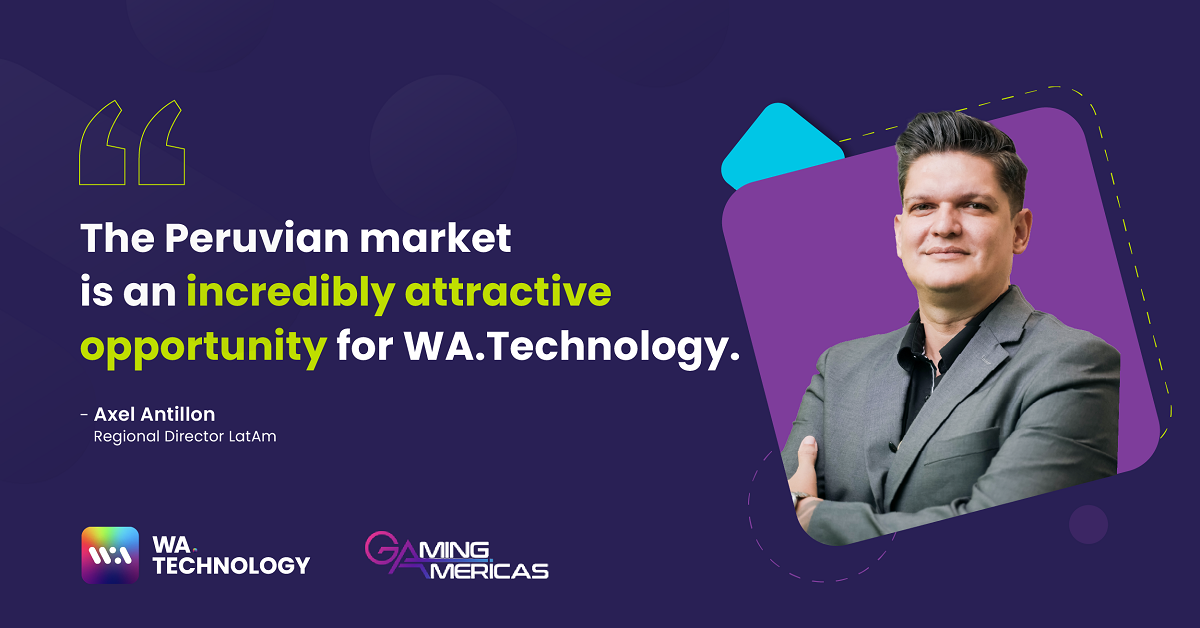
What opportunities has WA.Technology identified in the Peru market? Why was this an attractive expansion opportunity?
The Peruvian market is an incredibly attractive opportunity for WA.Technology, for many reasons. The market is home to a large, fast-growing, tech-savvy audience that has an ever-growing disposable income available to enjoy gaming.
The Peruvian market is also no stranger to gambling regulation. Land-based casinos have been legalised in Peru since 1979; this legislation formed a solid foundation for many other LatAm markets to introduce similar regulations for brick-and-mortar venues.
Online regulations have been introduced much more recently, in October 2023, following approval from the regulator, MINCETUR. As you can imagine, this means that much of the population has a level of awareness of the different gambling products available to them.
Another key factor is the growing usage of social media platforms among players. In Peru, social media usage has surpassed eight hours a day – this provides an important opportunity for operators to be able to establish communications with players and, ultimately, build brand exposure. Growing internet and smartphone penetration across the country also presents a huge opportunity for the growth and development of the gambling industry. It is estimated that smartphone penetration is approximately 1.2 phones per person, making the type of online gambling we’d expect in Europe and North America quickly available further south.
Why has now been the right time to enter Peru?
As they say, there’s no better time than the present! We already have a strong presence in LatAm. The introduction of regulations that govern the online gambling space in Peru has opened up new doors for us to expand our footprint across the region.
Peru’s regulatory framework makes this market the perfect opportunity for WA.Technology to bring our expertise to operators across this nascent market. With more and more operators entering Peru (the last time I checked, there were 145 licence applications), we knew that there would be a demand for platform providers that can offer the full package of iGaming solutions. WA.Technology is perfectly placed to deliver exactly that.
Our full spectrum of products and solutions – which includes WA.Platform, WA.Sports, WA.Casino, WA.Fantasy, WA.Affiliates and WA.Lottery – will allow sportsbooks and casinos across Peru to revolutionise the way they engage with bettors by facilitating new levels of personalisation and localisation.
How do you plan to stand out from the crowd? What are your key USPs for this market?
WA.Technology has three key aspects that will give us a true edge in the Peru gaming market, making us the best proposition available for operators. The first is that we are the only iGaming provider that fully understands the importance of localisation. We are a global business, but we act locally – as well as boasting nearly two decades on the continent.
In short, we are incredibly well versed in the intricacies of the LatAm market, and how best to navigate the unique gaming culture in Peru. We also have a team based in Trujillo, which gives us a solid base of operation and allows us to stay up to date on developments on the ground.
The second aspect is the quality of the platform that we have. The WA.Technology is second to none; our products and solutions are highly customisable and scalable, each tailored to the unique needs of each of our partners.
We also offer best-in-class technology, backed by our team of top-level professionals, which utilises artificial intelligence to create the most efficient, streamlined products for our partners. This combination of expertise and cutting-edge technology gives WA.Technology an edge in the Peruvian market and allows us to stay ahead of any changing trends.
The final aspect is the support that we can offer to our partners. Operators are not just purchasing a product from WA.Technology; they are getting a full package of iGaming solutions. By partnering with us, operators will gain access to a wealth of knowledge and round-the-clock support that no other provider on the market can offer.
In addition to our platform, our partners also benefit from our team’s extensive gaming experience. Not only do they receive the full spectrum of support when launching and executing their growth strategies – but we’re also able to seamlessly integrate our best-in-class technology, no matter what the local tech challenges, as we understand LatAm better than anyone else.
How will your previous experience in LatAm shape your Peru strategy?
Our experience in LatAm, and other markets around the world, has provided us with a deep pool of knowledge that will most certainly influence our value proposition and our ability to offer operators the best possible solutions based on their own unique requirements.
WA.Technology knows just how important localisation and personalisation are to creating stand-out experiences. This isn’t just applicable to LatAm, but rather to every market that is regulated. We are very fortunate that we can tap into our local team to ensure that we have a deep understanding of the cultural, social and economic dynamics of the market.
We know that in order to engage and retain players, we cannot offer a standardised set of products – each product and solution must be tailored, in collaboration with our partners, to allow them to achieve their company goals.
What have been some of the biggest trends within the Peruvian gaming market? And how does WA.Technology plan to capitalise on these?
Something to keep in mind is that the Peruvian market is incredibly diverse, so it is hard to pinpoint a small number of trends that are shaping the market. But there are two which I believe should be mentioned: the first is the growth in provinces outside of Lima.
Lima, the capital city, has long been the centre of operations in Peru. But the city has become increasingly saturated, with many operators focusing their attention here.
In recent years, we’ve seen particular growth in cities such as Arequipa, Ica and Moquegua, and with that, significant technological advances and growing acceptance of gambling activities. This growth looks as though it will continue long into the future, which I believe will bring plenty more opportunities for expansion in Peru.
The second trend I’ve noticed comes down to players’ behaviour. The grouping in digital tribes is becoming much more noticeable, especially as we can analyse behaviours across different demographics.
At WA.Technology, we have identified more than 40 different demographics of players and more than 60 different psychological biases that impact how players engage with gambling activity. With those insights, we can understand what stimuli can impact player behaviours and adjust our products accordingly.
WA.Technology’s commitment to compliance and social responsibility
WA.Technology is a dedicated B2B service provider that upholds a strong compliance culture and encourages social responsibility and responsible gaming. Our marketing efforts support partners in upholding ethical standards, reflecting a commitment to integrity, transparency and the well-being of the gaming community. WA.Technology encourages safe and responsible gaming environments by offering products and services that adhere to regulatory compliance and responsible marketing.
Interviews
Interview with Booming Games: A Sweepstakes Casino Powerhouse Poised for Big Wins in 2025!
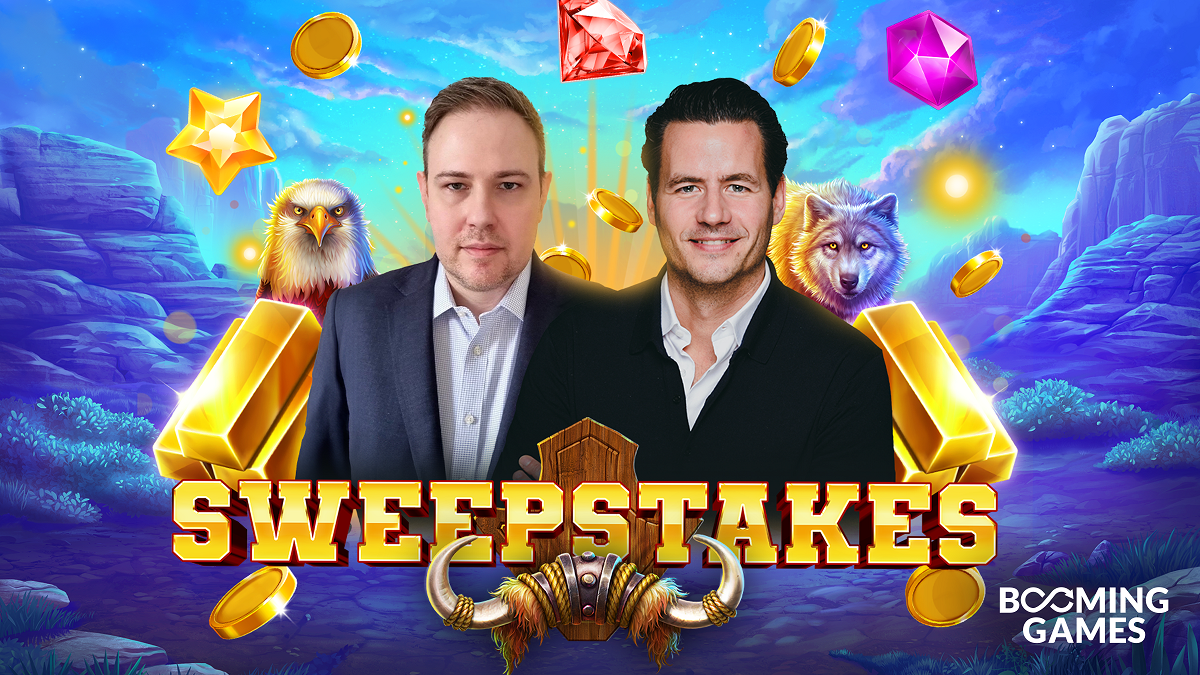
In the ever-evolving world of sweepstake casinos, Booming Games is making waves. With visually stunning slots, a wide range of games, and a strategic focus on sweepstakes, they’re quickly becoming the go-to supplier in the industry. We sat down with two of the masterminds behind Booming Games’ success: newly appointed Director of Games, Nemanja Zivic, and VP of Product, Moritz Blume. Here’s what they had to say.
Booming Games has been making quite a splash in the sweepstakes space recently. What’s the secret sauce behind your success?
Moritz Blume: laughs Well, it’s no secret that we’ve been laser-focused on making Booming Games the ultimate partner for sweepstake casinos. For us, it all starts with the players. We’ve built a reputation for creating visually stunning and feature-packed games that keep people coming back for more. And, you know, our sweepstake-friendly features like interactive bonuses, free spins, and multipliers? Players love it! Who wouldn’t want to hit a big win without staking any real money? That’s kind of our jam.
We’ve also made sure to optimize all our games for mobile because let’s face it, people love spinning the reels on their phones, whether they’re on the couch or waiting for their coffee. The seamless mobile experience keeps them hooked, and we’re proud of that.
You’ve just introduced Nemanja Zivic as the new Director of Games. How does he fit into Booming Games’ already strong team?
Moritz Blume: Oh, Nemanja is a rockstar! He brings a ton of experience, not just from the online iGaming world, but as a passionate player of land-based games too. His expertise spans both worlds, and he’s helping us take those proven land-based features that players love and bringing them online. We’re offering players mechanics tailored to all kinds of play styles. Nemanja’s input ensures our games are not just popular but keep players coming back for more.
Nemanja Zivic: Absolutely! We know there’s a traceable trajectory for the features that start in land-based casinos and go on to make waves online. There’s nuance, of course, but we get it. That’s why we offer content featuring both the core and the evolution of Hold and Win, Cash Collect, Triple-pot bonuses, quick-hit Multi jackpots, Multi-reel set Bonuses, and short-term persistence games that make players feel right at home. We bring these land-based features online, and then elevate them with multiple bonus buys, side bets, and picks—ensuring every kind of player, from the casual spinner to the high roller, finds something that resonates with their style.
Between Moritz and me, we’ve got the experience to know what players crave. Add that to our killer roadmap for 2025 and 2026, and we’re all set to release some seriously exciting new titles.
Speaking of sweepstakes, what specifically sets Booming Games apart for operators in this space?
Nemanja Zivic: Booming Games offers full flexibility and an unmatched diversity in our game portfolio—whether you’re looking for classic casino fruits and diamonds, popular casual player favorites, or high-roller picks, we’ve got it all either in the portfolio already or coming next year.
For sweepstake casinos, we provide modified language support tailored to sweepstake players, social currencies, you name it—we’re all about making it work for the operator. And we don’t just stop there. We offer customized game titles to help strengthen the casino’s brand. Want a game with your logo on it? We can do that! Want exclusive features for your VIP players? Done.
Oh, and let’s not forget our various app integrations. We’re getting embedded into platforms that sweepstake players use the most. If you want your Booming Games titles in your app store, we make it happen. Anything’s possible when you’re working with us.
Wow, that’s impressive. Can you tell us more about how you’re integrating with influencers and sweepstake streamers?
Moritz Blume: We’re playing the long game here. In 2025, we’re going to be teaming up with some big names in sweepstake-focused streaming and influencer marketing. Expect to see Booming Games plastered all over Twitch, YouTube, and every platform where people love to watch gameplay. We’ve got some secret partnerships up our sleeve with streamers who are going to take our games to the next level in terms of exposure.
We’re already among the top 3 revenue drivers on various sweepstake platforms, and we’re only going to climb higher. By working closely with influencers, we’re taking our visibility and engagement to new heights. The future is looking bright!
It sounds like Booming Games is on the verge of a major sweepstake takeover. What can we expect next?
Nemanja Zivic: We’re just getting started! We’re in the final stages of some truly exciting partnerships and game launches tailored specifically for sweepstake operators that will redefine the player experience. At the same time, we’re always keeping our eyes on regulatory changes—if there’s an update, we’re ready to react the next day, ensuring our games are fully compliant wherever they’re played.
But that’s not all—responsible gaming is one of the pillars of Booming Games’ strategy. While we’re busy creating all these exciting new features, we’re equally focused on making sure our games are safe, secure, and fair for everyone. By staying on top of regulation and promoting responsible play, we aim to deliver not just thrilling games but ones that players can trust.
Any last words for the sweepstake casino operators and players reading this?
Moritz Blume: If you’re an operator, Booming Games is the partner you’ve been waiting for. We’ve got the tools, the games, and the know-how to make your players love what they’re playing. And for the players? Strap in, because Booming Games has some wild new titles coming your way. 2025 is going to be a ride!
Sounds like Booming Games is the perfect storm for sweepstake casinos. Thanks for chatting with us!
Moritz Blume and Nemanja Zivic: in unison Thank you!
Booming Games continues to dominate the sweepstake casino world, with cutting-edge game design, tailored solutions for operators, and exciting partnerships in the pipeline. Stay tuned for their roadmap in 2025—it’s going to be big!
-
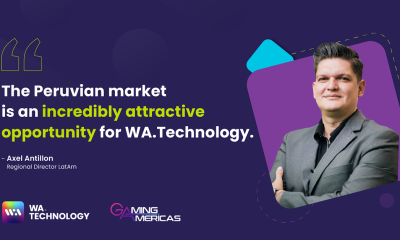
 Interviews7 days ago
Interviews7 days agoAxel Antillon: Our Peru entry is a major milestone for WA.Technology
-

 Compliance Updates6 days ago
Compliance Updates6 days agoGiG grows regulated market footprint with new B2B supplier authorisation for Peru
-

 Latest News5 days ago
Latest News5 days agoHarrah’s Cherokee Valley River’s New Hotel Tower Nears Completion
-

 Latest News6 days ago
Latest News6 days agoPatrick Homm to Lead Scientific Games International Lottery Systems Technology
-
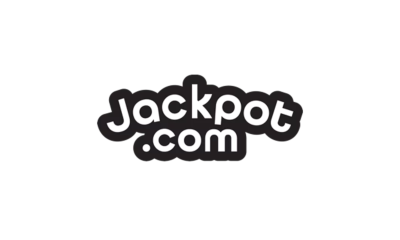
 Latest News6 days ago
Latest News6 days agoLottery Courier Jackpot.com Launches Digital “Scratchers”
-

 Latest News2 days ago
Latest News2 days agoLos Angeles Rams launch Next Gen Stats-powered, in-stadium highlights through new collaboration with Genius Sports
-
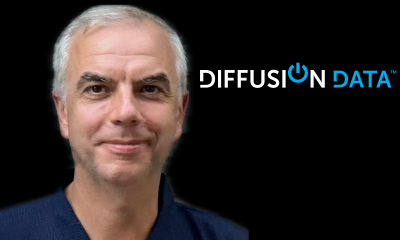
 Latest News6 days ago
Latest News6 days agoDiffusionData Appoints Raphael Vergnaud as CRO
-

 Press Releases6 days ago
Press Releases6 days agoSpintec Introduces a Host of New Products at G2E


